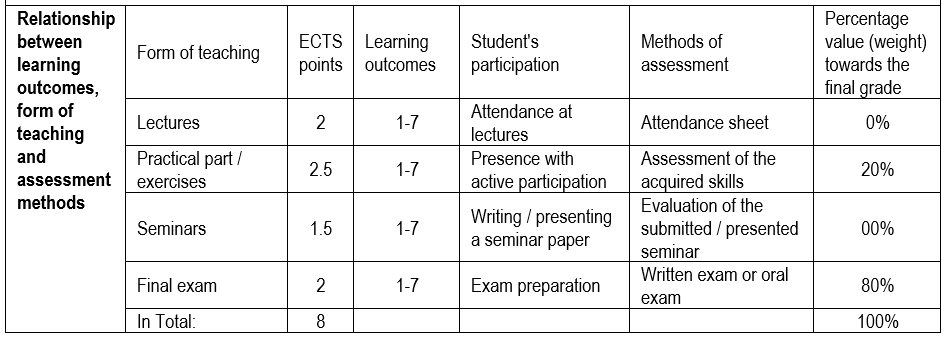Students gain basic knowledge of cell structure and function as structural unit of the body. They get familiar with processes of cell division, differentiation and intercellular communication as well as comprehension of principles and roles of cell death which are necessary to know in order to understand cellular pathology processes. They familiarise with cell-chromosome foundations of inheriting a hereditary disease in classical genetics.
Biological membranes, principles of membranous transport - set of different transporting systems, intercellular contacts, cell polarisation and intercellular communication and message transmission.
Cytoskeleton and cell movement: microtubules and intermediary filaments. Abnormal structure and activity of cytoskeleton as basis of certain diseases.
Biosynthetic-secretory pathway and endomembrane system: endoplasmic reticulum, Golgi apparatus, lysosomes and dissolution of macromolecules, exocytosis and exocytosis pathways.
Exocytosis pathways: endosomes and different transmission ways of macromolecules in the cell. Normal and abnormal ways of exocytosis and endocytosis.
Energy converting organelles: mitochondria as semi-autonomous organelles.
Cell nucleus as genome carrier, cell nucleus in interphase and nucleolus, chromatin and condensation levels of chromatin, chromosomes and chromosome and genome mutations.
Cell division: mitosis and meiosis and genetic recombination.
Cell cycle: phases and checkpoints, regulation mechanisms.
Cell death during cell division: necrosis and apoptosis.
Cell bases of genetics and different types of inheritance: autosomal-dominant and recessive, gender, to chromosome X (dominant and recessive) and to chromosome Y linked inheritance. Mitochondrial and polygenic, also multifactorial inheritance. Genetic polymorphism and foundations of immunogenetics.
Primordial germ cells, spermatogenesis and ovogenesis. Basics of cellular and molecular fertilisation, gender determination. Late phases of embryo development; scoring and gastrulation. Genetic bases of establishment of anatomical planes.
Required course materials:
- Cooper G.M. i Hausman R.E.: 'Stanica - molekularni pristup' (The Cell - A Molecular Approach), Washington, ASM Press, 4e, 2003; Medicinska naklada, Zagreb, 2010., hrv. izdanje.
- Grupa autora:'Priručnik za vježbe iz medicinske biologije', skripta Medicinskog fakulteta Osijek, 2011.
Upon completion of this course, students will be able to:
1. Explain the origin of eukaryotic cells and acquire the ability to independently recognize cellular structures on histological specimens
2. Compare laboratory techniques (immunohistochemistry, cell culture) and their application in biomedicine
3. Critically evaluate the processes of replication, transcription and translation and explain their significance for cell activity
4. Evaluate the mechanisms of intracellular signaling and explain their function
5. Compare the mechanisms of gene expression regulation
6. Identify basic concepts of human genetics and analyze gene interactions
7. Review the importance of chromosomal aberrations for human health



